skip to main |
skip to sidebar
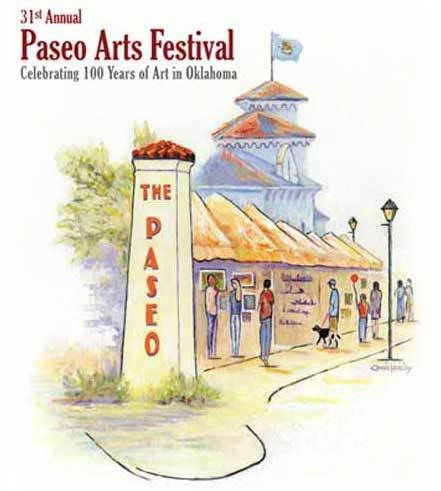 Supplementing my first Paseo post Supplementing my first Paseo post, the 31st Annual Paseo Arts Festival was a smashing success, despite mildly inclimate weather -- temperatures were pleasant and only a mild sprinkling of mist was an inhibitor, perhaps more than "mist" before this cloudy Monday when the pics below were taken! Even if an occasional rainy drizzle fell over the Memorial Day Weekend and prompted many to bring, and need to use, their umbrellas, the art, the performances, and the dawgz, were absolutely outstanding!
"Dawgz," you say? Yeah, P.D. Eastman (writer of Go Dog Go!) would have been proud! The pics below do not begin to capture the significantly large audience of dawgz at the 2007 Paseo Arts Festival!
Click on a pic for a 1024 x 768 px view
Big dawgz and little dawgz. Black dawgz ...
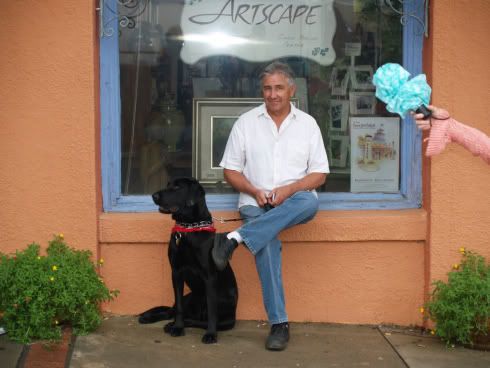

Who is this musician and his Danger Dawg? See Dan Danger At The Danger Zone!

... and white dawgz ...
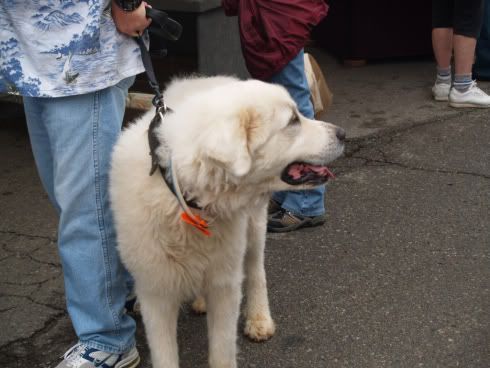
... dawgz in a house ...
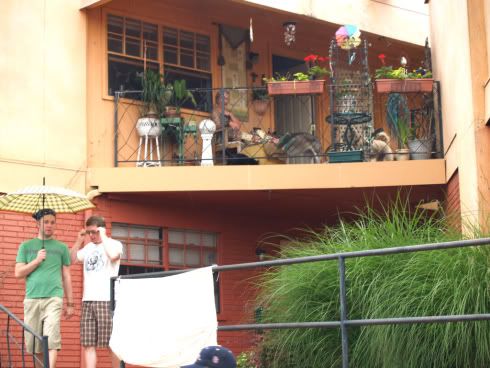
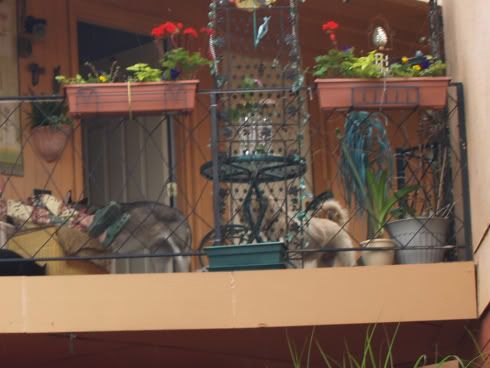
... and dawgz on the ground ...


The 31st Annual Paseo Arts Festival was nothing if it was not a PARTY, a BIG Dawgz PARTY (but, as for me, forget about climbing up to the top of a tree to have a dawgz party in this post ... that just ain't gonna happen ... it was all pretty much happening on the ground, anyway)!
Musicians performed ...
Here, Matt Walsh's Acoustic Blues wowed the audience ...
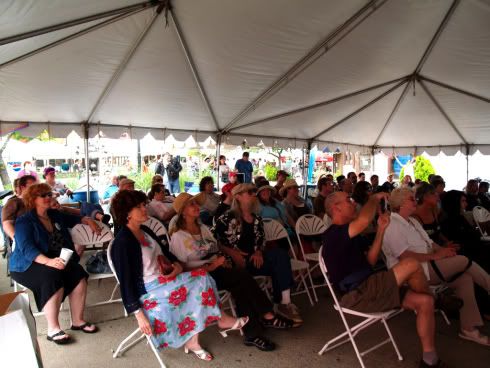
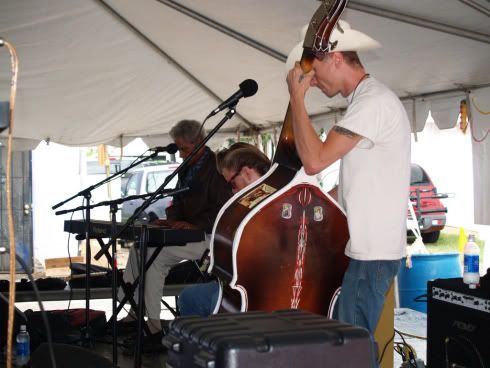
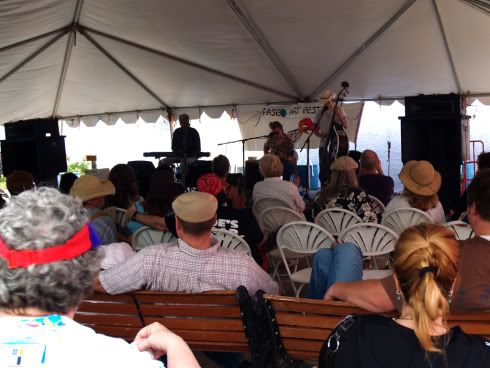
"Cookie, Cookie, will you lend me you're your comb!"
GREAT hair, Matt! Immaculate and evocative! How cool is this?
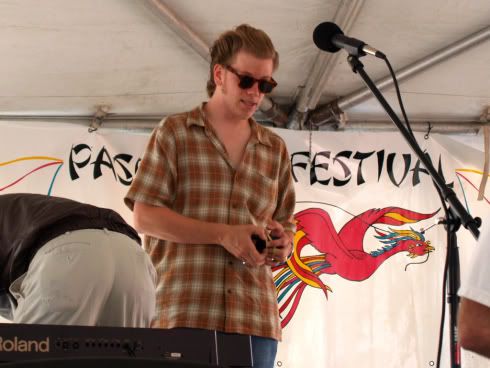
Matt had better watch out for hair-snippers like Delilah, though ...

The "Suspicious Contra Band" knocked the crowd out, too ...
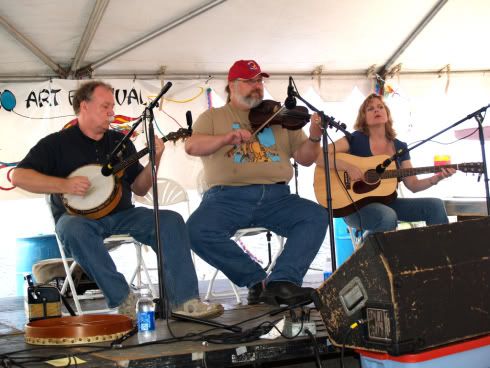
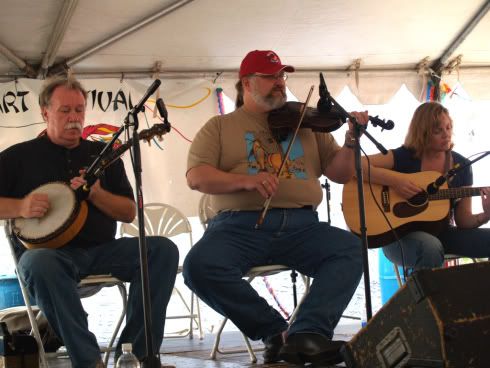
To keep everything on the up-and-up, there were traditional dancers! Yea!
(Doug Dawg is a big supporter of the traditional arts!) Or, non-traditional, whichever this is! See Pseudo Dance for just a bit more (less, actually) about this group, which contains this greeting: "Welcome to the dance underground of Oklahoma City!"
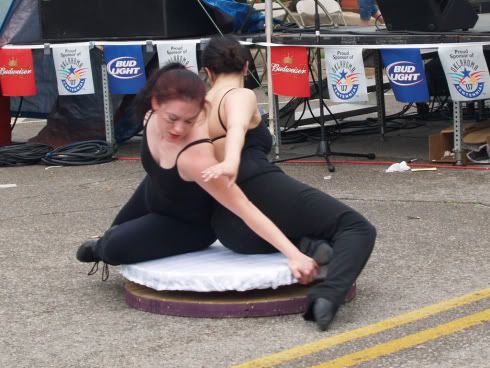
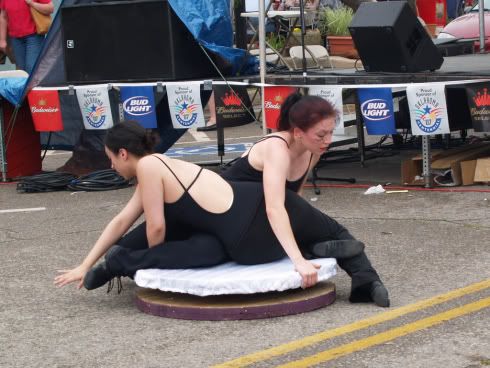
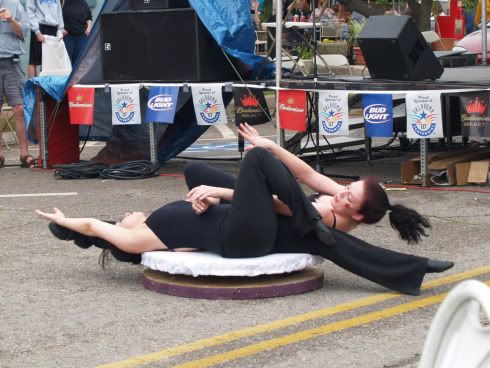
God only knows what they were doing, but, that said ...
STOP! I gotta know right now!
Do you love me? Will you love me forever?
I gotta know right now!
Whoops, got carried away with Meat Loaf ... back on topic ...
is this an "arts" festival, or what?
Art is much more than pictures/paintings/music.
This event had all bases covered, from the "indoor" ...
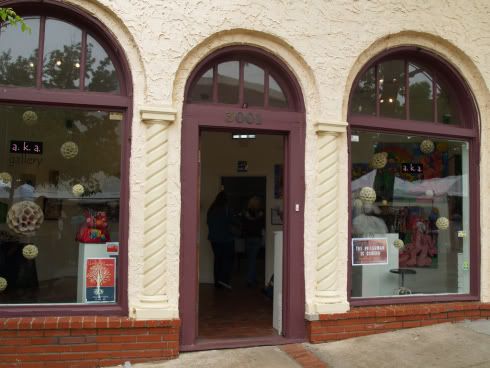
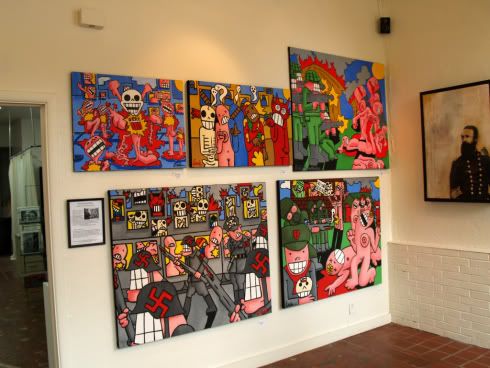



... to the "outdoor" ...
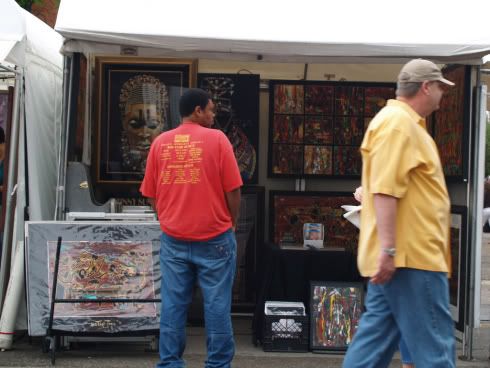

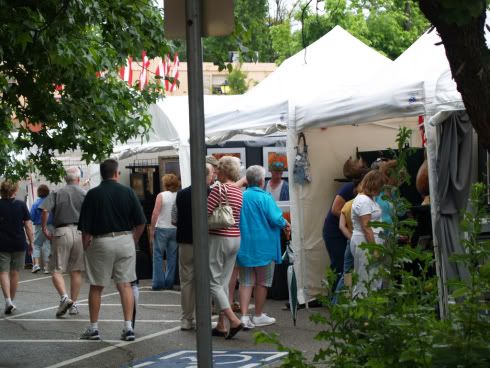
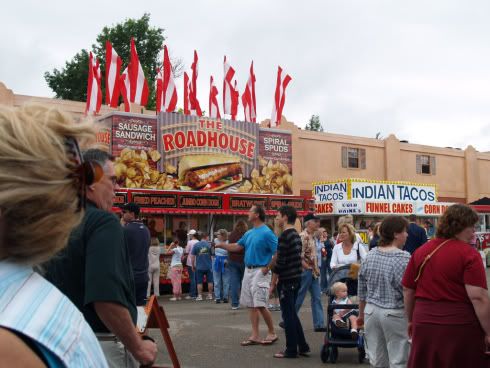
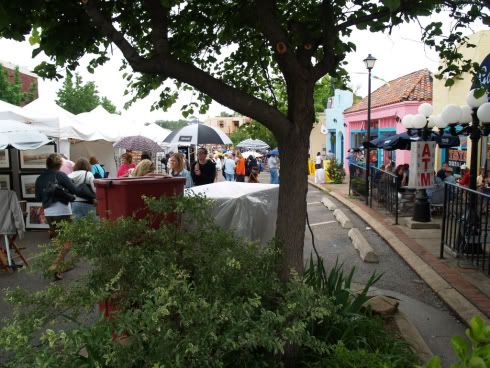
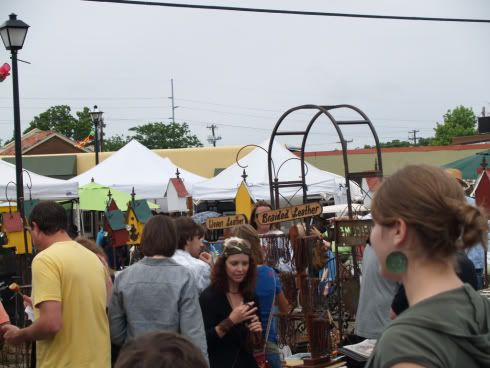
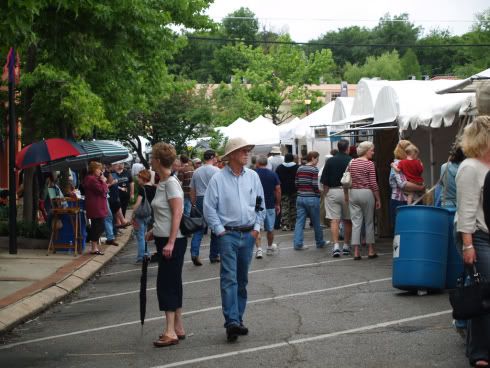

And, here is the prettiest girl of them all ...
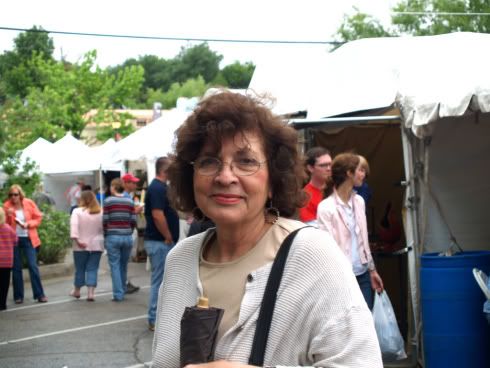
... whether the "outside" be rainy or not ... the Queen of Mexico cannot be beat!
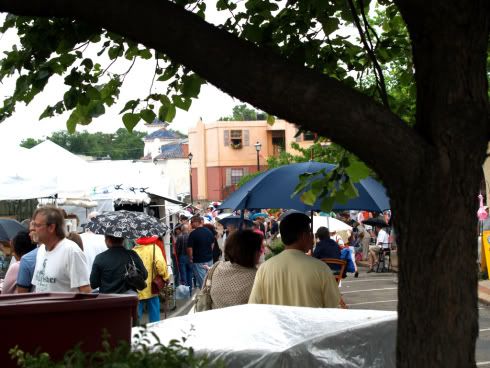

"Hello again. And now do you like my hat?"
"I do. What a hat! I like it! I like that party hat!
I'll see you next year in your party hat at the 32nd Annual Paseo Arts Festival!"
Top
... Click here to read the full article and any comments ...
Bill TilghmanThough I'm skipping ahead just a bit in time from the 1st Cops & Robbers post ... I plan several other posts in this series ... I think I'll jump ahead just a bit to talk about a "cop" ... William Matthew ("Bill") Tilghman.Oklahoma City Police Chief, 7/15/1911 ~ 2/22/1913
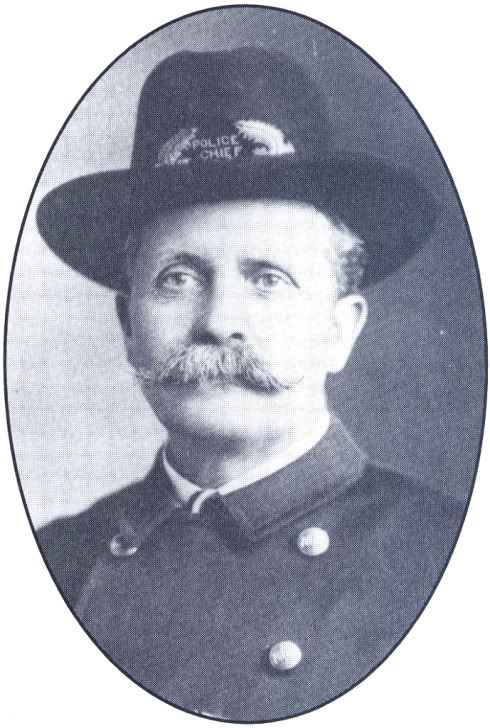 According to The Chronicles of Oklahoma, One of the most picturesque figures in the history of Oklahoma, passed off the stage of action with the killing of William Tilghman, of Oklahoma City, who had been serving as a peace officer at the new old town of Cromwell, in Seminole County, on Saturday evening November 1, 1924. Somehow, reading a bit about Bill Tilghman, I doubt that "picturesque" is an adjective that he'd admire to be remembered by – it's much too "girly-girly" sounding for a guy who was inducted into the Hall of Great Westerners of the National Cowboy and Western Heritage Museum in 1960. Instead, he'd likely prefer that he be remembered as a guy that "died with his boots on," which, sadly, he did.
Tilghman's Background. Born in Ft. Dodge, Iowa, July 4, 1856, Tilghman moved with his family to Atchison, Kansas, and then left home at the age of 15 (around 1869) to become a buffalo hunter. Eventually, though said to be a teetotaler, in 1875 he opened a saloon in Dodge City, Kansas, but soon accepted an offer from Bat Masterson to become a deputy sheriff, and where he also served as City Marshall. He participated in the April 1889 Land Run and most internet sources say that he established a homestead in Guthrie – although a June 27, 2003, article in the Chandler newspaper says that he settled in Chandler on Sac and Fox land during the Land Run. Whichever, in 1891 he was appointed as a U.S. Deputy Marshall and served in that capacity until 1910. See Legends of America.
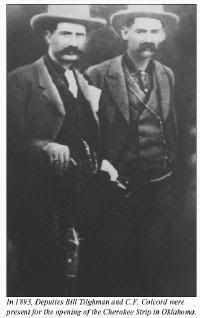 This pic of Deputy Marshalls Tilghman (left) and Charles F. Colcord (right) was taken in 1893 and is from Ray Colcord's (Charles Colcord's grandson) website. Tilghman and Colcord were present for the opening of the Cherokee Strip in 1893. This pic of Deputy Marshalls Tilghman (left) and Charles F. Colcord (right) was taken in 1893 and is from Ray Colcord's (Charles Colcord's grandson) website. Tilghman and Colcord were present for the opening of the Cherokee Strip in 1893.
Click the pic for a larger image.
While a federal Marshall, Tilghman was under the jurisdiction of federal "Hanging Judge" Isaac Parker in Fort Smith, Arkansas.
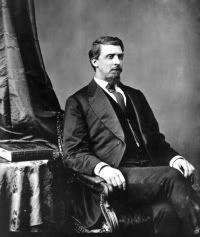 
During that time, according to Legends of America,
The Three Guardsmen – This name was given in Old West literature to describe the three effective U.S. Deputy Marshals, Bill Tilghman (1854-1924), Chris Madsen (aka The Fighting Dane, 1851-1944) and Heck Thomas (1850-1912).
Credit: Legends of America
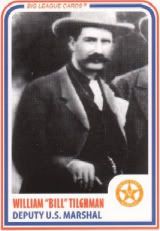 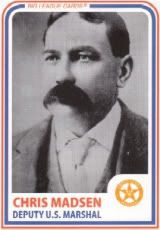 
In 1889, this trio began the "cleaning up" of Indian Territory, which at the time, was known as a wild and lawless place. Working under Judge Isaac Parker in Fort Smith, Arkansas, the three men arrested more than 300 outlaws in the next ten years and killed many others. Their main claim to fame was their relentless pursuit of the members of the Doolin-Dalton Gang, eliminating many of them systematically, and apprehending those that would surrender. Actually, Tilghman arrested Doolin single-handedly in a Eureka Springs, Arkansas, bathhouse. According to Legends of America,
In 1893, the “Three Guardsmen” were tasked with taming Perry, Oklahoma , which had been born overnight in the Oklahoma land run of September 16, 1893. In no time at all, the settlement, which quickly earned the title of “Hell’s Half Acre,” was filled with some 25,000 people and 110 saloons. With the tidal wave of humanity that had converged on Perry, lawlessness, disputes, and mayhem were the “norm” of the day in this burgeoning city. Also operating in the area was the infamous Doolin Gang, whom the trio were determined to apprehend. Thomas became Lawton's Chief of Police in 1902, serving seven years. Madsen died in Guthrie in 1944.
Following Tilghman's tenure as a U.S. Deputy Marshall, he became Sheriff of Lincoln County and, then, was elected to the Oklahoma Senate from the Chandler district. He resigned from the latter position in 1911 to become the Oklahoma City Chief of Police.
Life In Oklahoma City. Bill Tilghman, becoming Oklahoma City's Chief of Police on July 4, 1911, on his 57th birthday, may not have had quite as much comparative "cleaning up" to do as had become his norm – not much is said about his capturing/shooting bad guys as there is about his cleaning up vice and keeping the city quiet. Ron Owens' Oklahoma Justice (Turner Publishing Co. 1995) identifies Oklahoma City's population at that time as 64,205 which covered a 17 ½ square mile area, and that the police force then had 87 men. An Oklahoman editorial said, "Oklahoma City now has a real Chief of Police."
Owens' book notes that his first Oklahoma City home was located at 108 E. 9th Street, but that he later moved to "into more fashionable digs" at 924 W. (presumably "NW") 12th Street – neither home exists today.
Owens says that, as Chief, Tilghman was more interested in organizational efficiency and keeping order than he was about those serving under him making high numbers of arrests – not that he encouraged turning a blind eye to local transgressions!
Everyone was curious about what Tilghman's mandate on vice enforcement would be. It didn't take long to find out. Three days after his appointment, the new Chief gave his terse mandate: "Close 'em up." Twenty-five bootleggers went to jail the first night, posting more than $600 in bonds. The newspapers lauded the Department for "the biggest day's work done in more than two years." Owens' book notes several other case-solving types of things, e.g., figuring out that a series of "safe" burglaries were inside-jobs, and the identification of a husband's murder being at the hands of his wife.
An interesting anecdotal story had to do with the 1912 campaign for County Attorney. Al J. Jennings, a convicted train robber and outlaw, somehow managed to become a lawyer and won the Democratic Party's nomination for the post, he saying during the campaign, "When I was a train robber and outlaw, I was a good train robber and outlaw. If you choose me as prosecuting attorney, I'll be a good prosecuting attorney." Though he won his party's nomination, he was defeated by the Republican candidate in the general election. Jennings would later make a movie about his outlaw career and other "westerns", as well. Having run, and lost, in the 1914 race for Oklahoma Governor, the reformed train robber and lawyer apparently devoted his time to making movies, after that.
Local politics apparently got the better of Bill, and, Owens says, Tilghman resigned on February 11, 1913, "possibly suffering from a common affliction of police administrators of all generations, fecal exhaustion, more colloquially known as 'tired of the bullshit.'"
The Movies. Tilghman became a movie director and actor before his appointment as Police Chief, beginning with the 19 minute long 1908 A Bank Robbery in which Al J. Jennings (same person as the above), Frank Canton, Quanah Parker, Heck Thomas, and Tilghman played themselves. The movie was filmed in Cache, Oklahoma (west of Lawton, south of the Wichita Wildlife Refuge). See this IMDb page for more.
Following his retirement as Oklahoma City Police Chief, he directed and stared in The Passing of the Oklahoma Outlaws. According to the IMDb website,
In the early 1900s he became fed up with the way Hollywood glamorized the outlaws of the west and, along with his friends E.D. Nix and Chris Madsen, set out to make a movie of how it really was back then. They starred in the film, Passing of the Oklahoma Outlaws (1915), as themselves and arranged to have a member of the Dalton gang named Arkansas Tom released from prison to act as a technical consultant. They met with some difficulty in getting the film shown - theater owners didn't want to show it because there were no name actors in it. Hollywood told them to put Tom Mix in it if they wanted it to sell, but Tilghman refused. 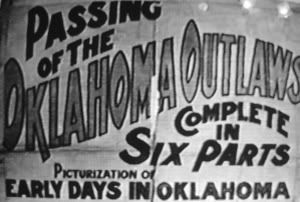
See this IMDb page for cast members and other information. A nice biography of this actor/director is at the IMDb website. Also, see this Wikipedia article.
A fact-based made-for-TV 1999 movie, You Know My Name, was made about him, too, staring Sam Elliott as Bill Tilghman. See IMDb's pages for additional information.
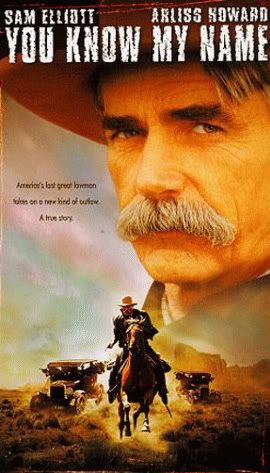 A brief "trailer" for this movie is at IMDb's website. A brief "trailer" for this movie is at IMDb's website.
Cromwell. Cromwell is located on Oklahoma Highway 56 just south of Interstate 40 in Seminole County, as shown below.
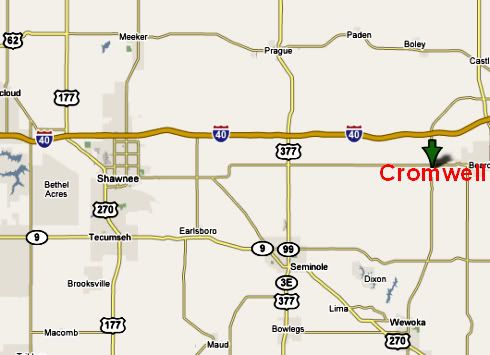
These days, if you close your eyes, you will miss it and its 200+ residents. But, that was not always so.
In the early 1920s, Cromwell hit "oil" big time and it quickly became (according to IMDb's biography of Tilghman), "* * * a virtual cesspool of crime: bootlegging, gambling and prostitution (many of the prostitutes being underage)." To the same effect, see this Wikipedia article.
 In 1924, Cromwell business interests contacted Tilghman and persuaded him to accept the position of town sheriff, and, at age 70, he came out of retirement to "clean up the city" ... something which may well have appealed to his Dodge City and Oklahoma/Indian Territory remembrances. See IMDb's biography of Tilghman for more about that. That article says that all of the vice going on in Cromwell was "under the protection of a corrupt federal Prohibition agent named Wiley Lynn." The article also says that Tilghman, "made good on his promises, closing down gambling houses, arresting bootleggers and moonshiners and sending the prostitutes home to their families. This upset those in town who were running the various crime rings, including Wiley Lynn." In 1924, Cromwell business interests contacted Tilghman and persuaded him to accept the position of town sheriff, and, at age 70, he came out of retirement to "clean up the city" ... something which may well have appealed to his Dodge City and Oklahoma/Indian Territory remembrances. See IMDb's biography of Tilghman for more about that. That article says that all of the vice going on in Cromwell was "under the protection of a corrupt federal Prohibition agent named Wiley Lynn." The article also says that Tilghman, "made good on his promises, closing down gambling houses, arresting bootleggers and moonshiners and sending the prostitutes home to their families. This upset those in town who were running the various crime rings, including Wiley Lynn."
Whatever the truth may be (and it is clear from all internet accounts I've read that the above synopsis is uniformly believed to be true), it is a fact that, on Halloween night, 1924, while Tilghman was making Lynn's arrest, Lynn inflicted a mortal gunshot wound on Tilghman who died on November 1.
The Wikipedia article says that, after Tilghman's death,
One month later, the town of Cromwell was torched, allegedly by angry citizens, with every brothel, bar, flop house and pool hall burned to the ground. No one took credit for the arson, although it has been suggested that instead of citizens, it was former lawman friends to Tilghman, led by former Deputy US Marshal Chris Madsen, who had formerly worked closely with Tilghman and lawman Heck Thomas, when the three men were known as the Three Guardsmen. There was no investigation into the arsons. Cromwell never recovered to its former wild status. What followed after Bill's death must have been locally analogous to the O.J. Simpson trial, relatively speaking and without the immediate connectivity of television and the internet. Headlines splashed across the press from November 1, 1924, until the end of the murder trial in 1925.
An article in the November 16, 1924, Ardmore Statesman described the shooting this way ...
Last Saturday about night Wylie Lynn, who has been for several months an "enforcement officer" in Oklahoma, rode into Cromwell, accompanied by two women and a man, all of whom are said to have been very drunk. The party of four had been riding around Seminole and Hughes county all the afternoon, and their condition had been noticed in all the places they passed thru.
Driving up to the sidewalk opposite the Murphy dance hall concerning which so much has appeared in the papers recently, Lynn stepped out of the Ford and, taking a pistol from his pocket, shot it off "just to see if it would go", he is said to have said. The shot called Tilghman out of the Murphy place, accompanied by a friend. Meeting Lynn on the sidewalk he ordered him to give up the gun, and submit to arrest. Lynn replied by a move to shot, but Tilghman caught his hand and, with the assistance of his friend, took the gun from Lynn, who dropped his hand in his pocket and drew another gun, with which he shot Tilghman three times. Tilghman kept hold of Lynn until the second gun was taken from him, then crumpled to the sidewalk, mortally wounded. Lynn was arrested and place in jail in Wewoka. Surviving the likes of anti-heros Bill Doolin and his gang, Tilghman met his end at the hands of an allegedly corrupt, and drunk, federal prohibition officer.
After his arrest and subsequent release, Lynn didn't immediately surrender himself when being charged with murder, but, eventually, he did. In a November 4, 1924, Oklahoman article, Lynn claimed that Tilghman was "blocking his arrest" of other persons, and in other articles, Lynn claimed that he shot Tilghman in self-defense.
Trial began in Wewoka (county seat of Seminole County) in May 1925 and a few days later Wiley Lynn was found "not guilty" of the charge of murdering Bill Tilghman.
Cromwell Aftermath. While Lynn's acquittal resulted in his being a "free man" and though he was discharged from his federal post, the story does not end there.
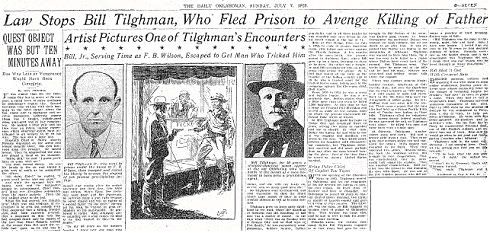
Tilghman's son, Bill, Jr., while serving time in a Tennessee prison under the name of F.B. Wilson, escaped in 1929, his purpose apparently being to obtain revenge against Wiley Lynn for the death of his father. The caption under the son's picture (left side, above), reads, "Bill Tilghman Jr., who went to prison under the name of F.B. Wilson, then escaped and risked his liberty to avenge the slaying of his famous gun-fighting father." He was captured in Davenport (a small town northeast of Oklahoma City and east of Chandler) before that could occur. In the article, it is said that he was waiting on a bus which was late, and that he was approached and arrested by local Police Chief Marvin Roberts who placed his hands on Bill Jr.s' shoulder and said, "Hello, Bill. I guess you have to come with me." "All right, Chief," he replied. "I guess you'd better take my guns." And while the stranger kept his hands aloft and the bystanders gasped in astonishment, Chief Roberts lifted two .45-caliber automatics from the man's pockets. Then the two walked away to the jail."
Tilghman's namesake son did not succeed with his "mission." Nonetheless, in 1932, Wiley Lynn was shot and killed by an agent of the Oklahoma Bureau of Investigation in Madill.
How Bill Tilghman Is Remembered. An April 19, 1925, Oklahoman article, said,
Although fate has decreed that William (Bill) Tilghman, veteran Oklahoma officer, cannot ride in the '89er parade Tuesday, those who rode with him more than thirty-two years ago will see that his memory does not fade.
A riderless horse, saddled with Tilghman's saddle, bridled with his bridle, the same Winchester tied to the saddlehorn, will be led by Ransom Payne, veteran officer who is in charge of the '89er section. I've found no, not one, article, coming to Lynn's defense ... much the contrary. Lynn appears to be universally vilified, and, conversely, Bill Tilghman himself is revered by local, state, and national authorities. Following his funeral ceremony at the 1st Presbyterian Church in Oklahoma City, then at NW 9th & Robinson, he was buried in the Oak Park cemetery in Chandler. Nationally, he was remembered by a 1999 stamp as part of the Legends of the West collection. Statewide, a painting of him in the Oklahoma State Senate honors him to this day. See the State Arts Council website for more about that.
Stamp Paintings
Note: If you're a stamp collector, see this link. Because of an error in identifying Bill Pickett in the 1st (recalled) edition, the original is worth a LOT of money!
Stamps (left to right, top to bottom):
Home on the Range, Buffalo Bill, Jim Bridger, Annie Oakley, American Indian Culture
Chief Joseph, Bill Pickett, Bat Masterson, Jon Fremont, Wyatt Earp
Nellie Cashmann, Charles Goodnight, Geronimo, Kit Carson, Will Bill Hickock
Western Wildlife, Jim Beckwourth, Bill Tilghman, Sacagawea, and Overland Mail
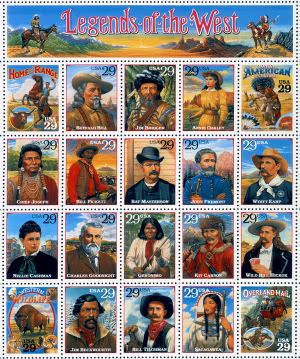 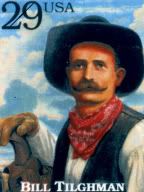
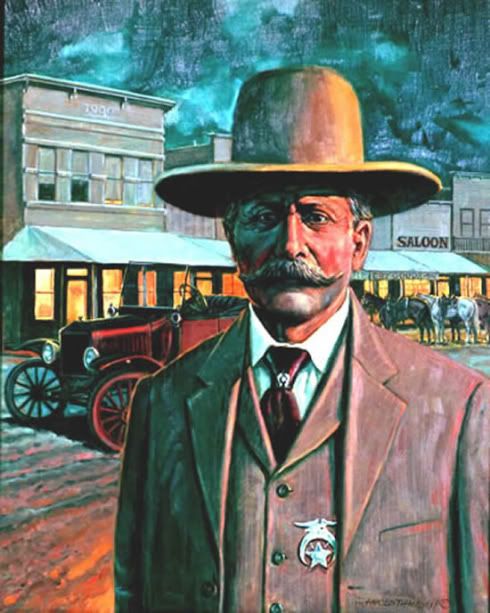
He is yet another Oklahoma City Hero, and one which we share with our surrounding neighbors including those to the north in Kansas.
For Further Reading:
Nice Rootsweb Article, including an essay by a cousin-descendantLegends of the WestTilghman memorabilia: Chandler's Museum of Pioneer History
Top
... Click here to read the full article and any comments ...
|































































